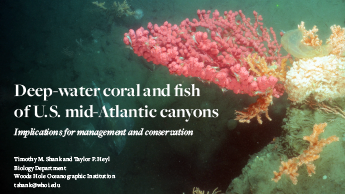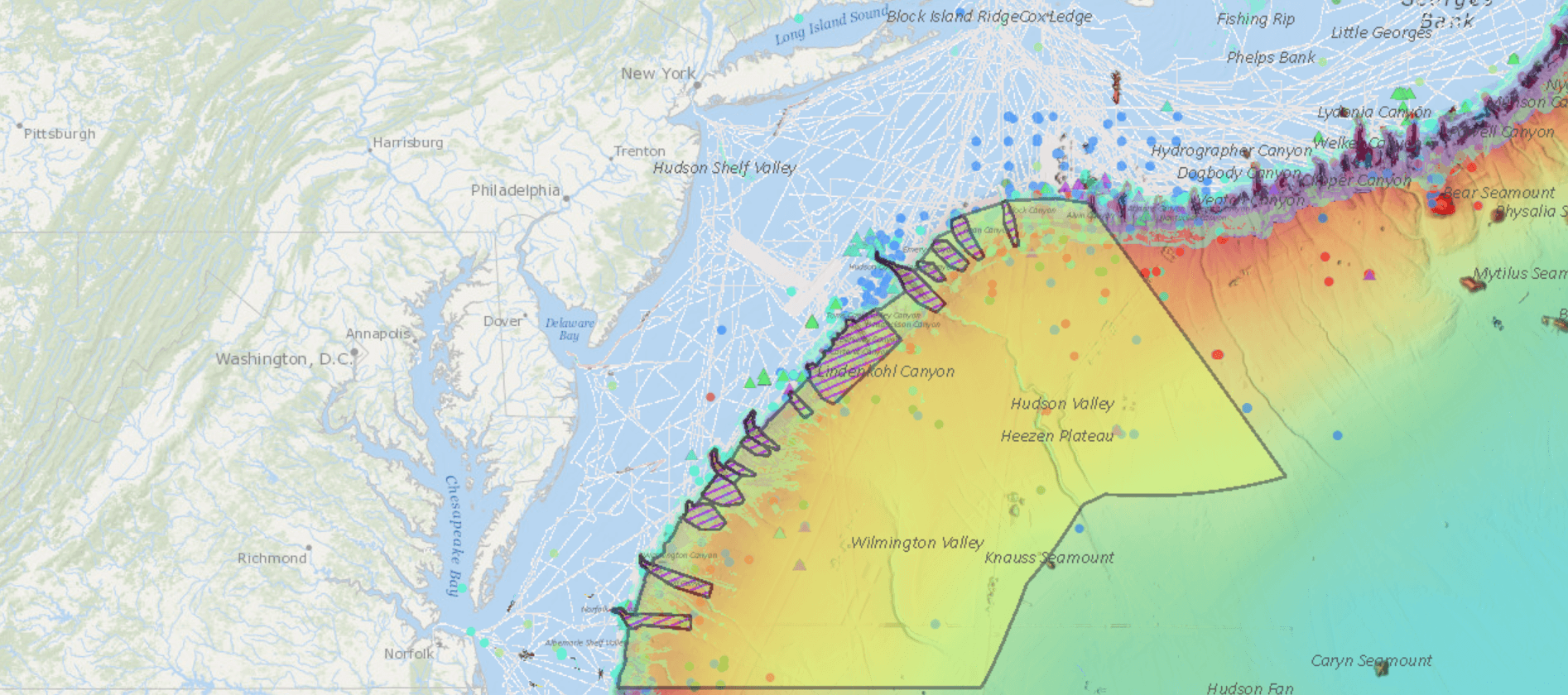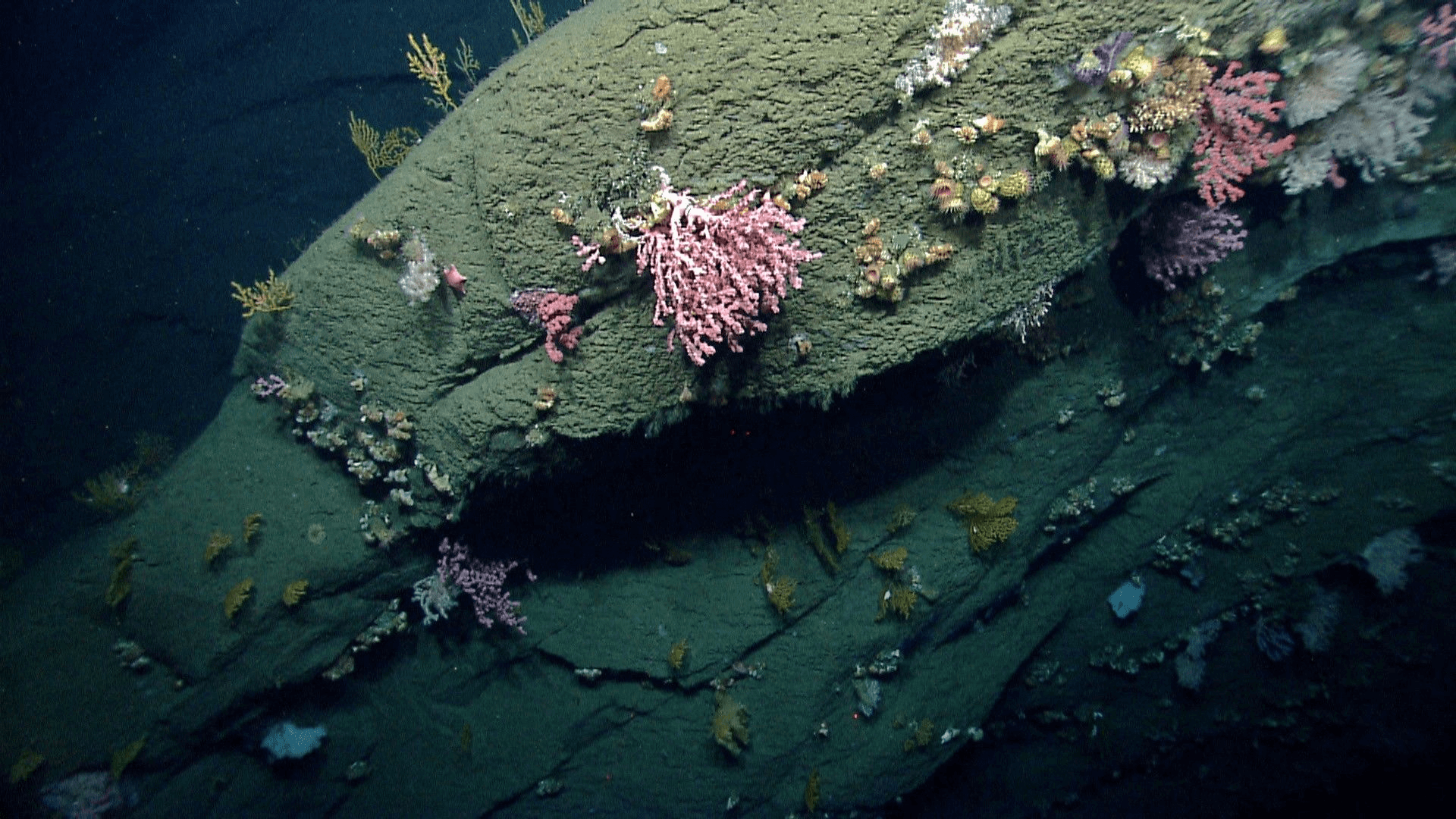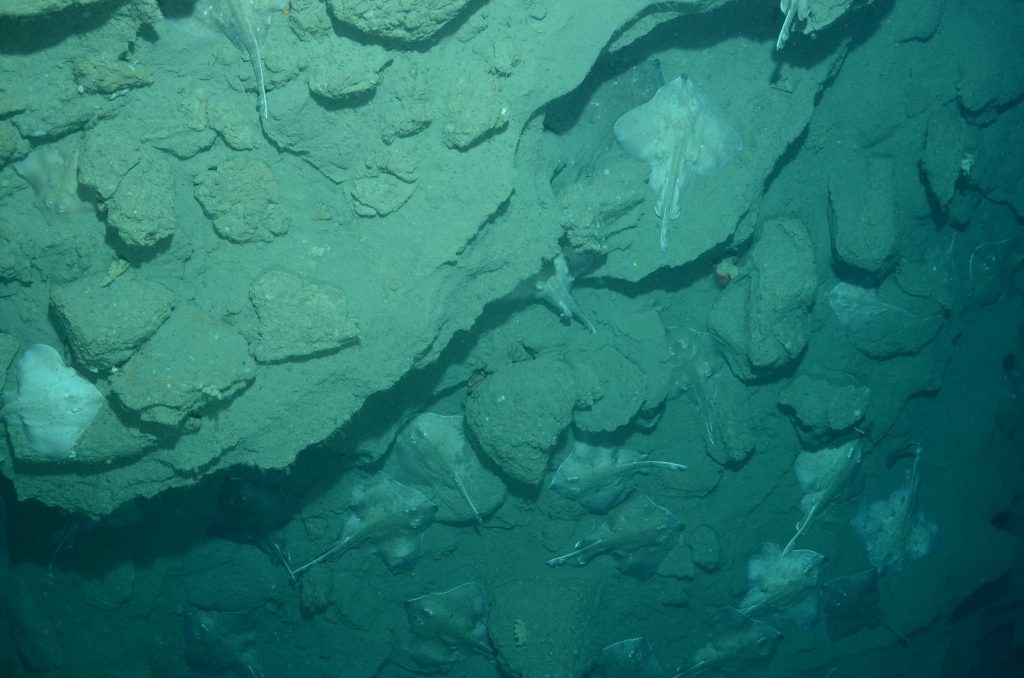SHARED REGIONAL PRIORITIES
Marine Habitats
The Need for Action
Cold-water corals, deep submarine canyons, and a broad, sandy continental shelf are among the diverse ocean habitats of the Mid-Atlantic region. In addition to being home to wildlife like sea turtles, whales, dolphins, seabirds, fish, crustaceans, corals, and other species, these habitats support commercial and recreational fisheries and other important economic activities in the region. MARCO is working with partners to map and document the Mid-Atlantic Ocean habitats in order to maintain sustainable resource use and healthy ecosystems in light of climatic changes and increased human use pressure.
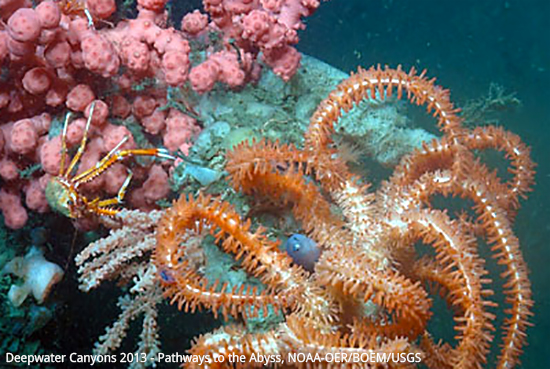
The National Oceanic and Atmospheric Administration (NOAA), in collaboration with other federal agencies and external partners, conducted a series of expeditions to survey deepwater canyons from Virginia to Maine. NOAA scientists invited MARCO to help identify priority areas that might be surveyed to help fill biological and geological informational gaps in the Mid-Atlantic. The NOAA ship Okeanos Explorer explored the deep waters of the Mid-Atlantic region, including canyons off New York, New Jersey, Delaware, Maryland and Virginia.
In addition to the identification of priority areas, MARCO worked with scientists at the Woods Hole Oceanographic Institution (WHOI) to add genus and species level coral data from deep sea canyons off the Mid-Atlantic coast to the Mid-Atlantic Ocean Data Portal. Using towed camera technology, they explored eight of the Mid-Atlantic’s lesser-studied canyons: Ryan, Carteret, Lindenkohl, Spencer, Washington, Wilmington, Leonard and Accomac canyons.
In addition to data on the Portal, other outreach to bring attention to this habitat and its diverse life were developed. Explore the amazing biodiversity of the deep-sea canyons through webinar recordings, story maps, interviews and photos.
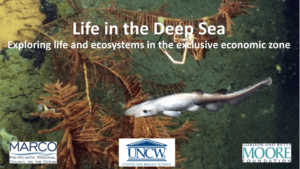
Photo credit: Steve Ross
The “Life in the Deep Sea” webinar series showcased the work of experts who shared photographs and information about the rarely seen submarine canyons just offshore from the Mid-Atlantic and the unique species that live in them.
Part I: Canyon Predators, September 9, 2020 recording
Part II: Canyon, Shipwrecks and Seeps as Marine Habitat, October 5, 2020 recording
Part III: Canyons as Habitat for Whales, November 5 recording; Read full opening remarks
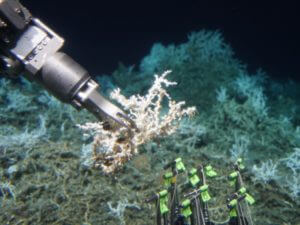
Alvin collects a sample of Lophelia pertusa from an extensive mound of both dead and live coral.
“Climate Change and the Impacts to Deep-Sea Corals” webinar presented June 24, 2021, explains climate changes in air-sea ineractions and presents modelling research on habitat suitability for Lophelia pertusa, the primary reef-forming species in the region, under a range of CO2 emissions scenarios. recording
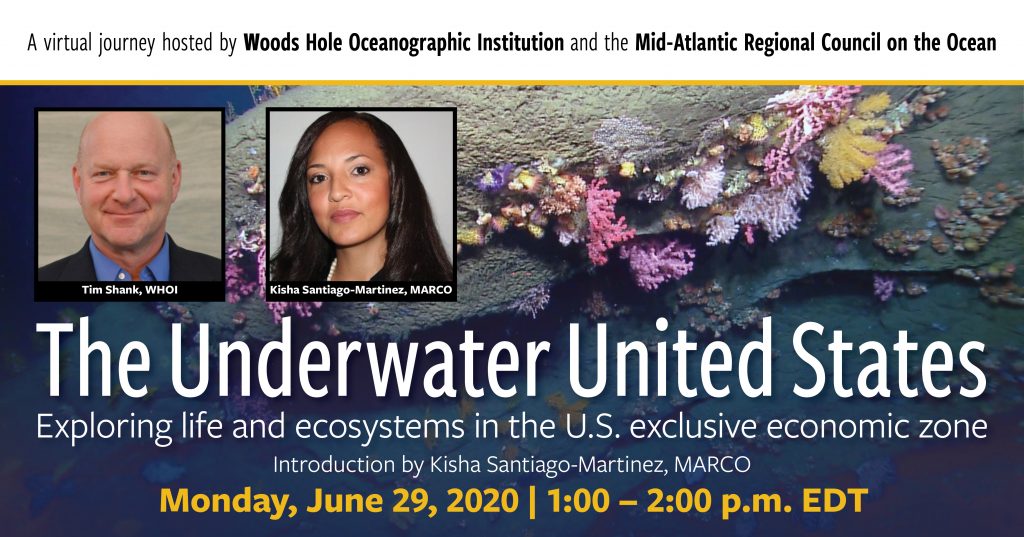
The recording of “The Underwater United States: exploring life and ecosystems in the U. S. exclusive economic zone” with Dr. Tim Shank, WHOI, is a virtual tour of the canyons which highlights the diversity of life found in this deep-sea habitat.
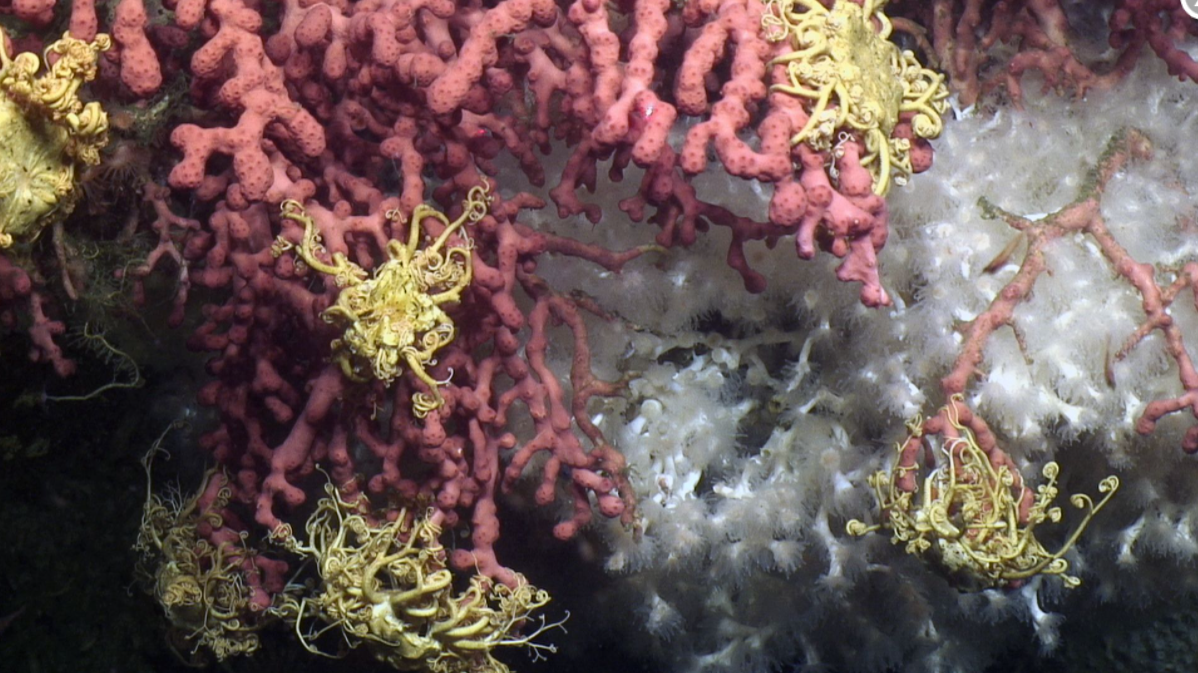
“Deep Sea Treasures of the Mid-Atlantic: Norfolk, Hudson, Baltimore Canyons” is a story map which can be used ast an educational resource.
Read the executive summary of the findings Deep-water Coral and Fish of U.S. Mid-Atlantic Canyons: Implications for Management and Conservation to learn more.
WHOI biologist Dr. Timothy Shank reveals what it was like to explore the canyon formations and observe coral colonies deep under water in this Ocean Stories “Tales from the Mid-Atlantic Canyons.”
“Exploring the Unexplored: Deep-Sea Canyons of the Mid-Atlantic” is a story map which is intended as an educational resource for all audiences on deep-sea canyons, corals and topography.
More images are available in the Photo Gallery.
The VA CZM Program, as a MARCO member, funded work to help visualize shifts in fish populations on the MARCO Data Portal. See trends in fish species movement which took place since the 1970’s or project future shifts. Go to the Mid-Atlantic Ocean Data Portal’s Marine Planner and look for Fish Species Through Time or Fish Species Future Projections in the Marine Life Theme.
Learn more about the Mid-Atlantic’s coastal and ocean habitats which provide critical functions for commerically, ecologically and culturally important species of fish, invertebrates, birds, and marine mammals and the maps and data products which providete information for regional ocean planning.
Work Groups/Collaborative Efforts
MARCO and MACO collaborate with governmental agencies, tribal nations and many other interested stakeholders through a series of specially focused work groups. The areas of focus that are relevant to this priority include:
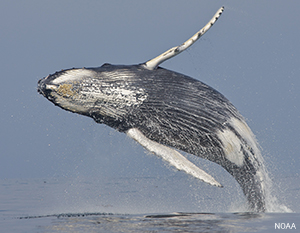
Ocean Data Mapping Team (OMDT)
The Portal boasts thousands of layers of ocean data and is regularly updated with new and improved data and functions associated with marine habitats. Highlights associated with marine habitats include:

